Having fun and making choices: 20 years of 'You Choose'
Published on: 10 January 2023
You Choose by Pippa Goodhart and BookTrust Writer-Illustrator in Residence Nick Sharratt, celebrates its 20th anniversary this year - and to celebrate, Nick has a look at all the ways there are to enjoy reading it!
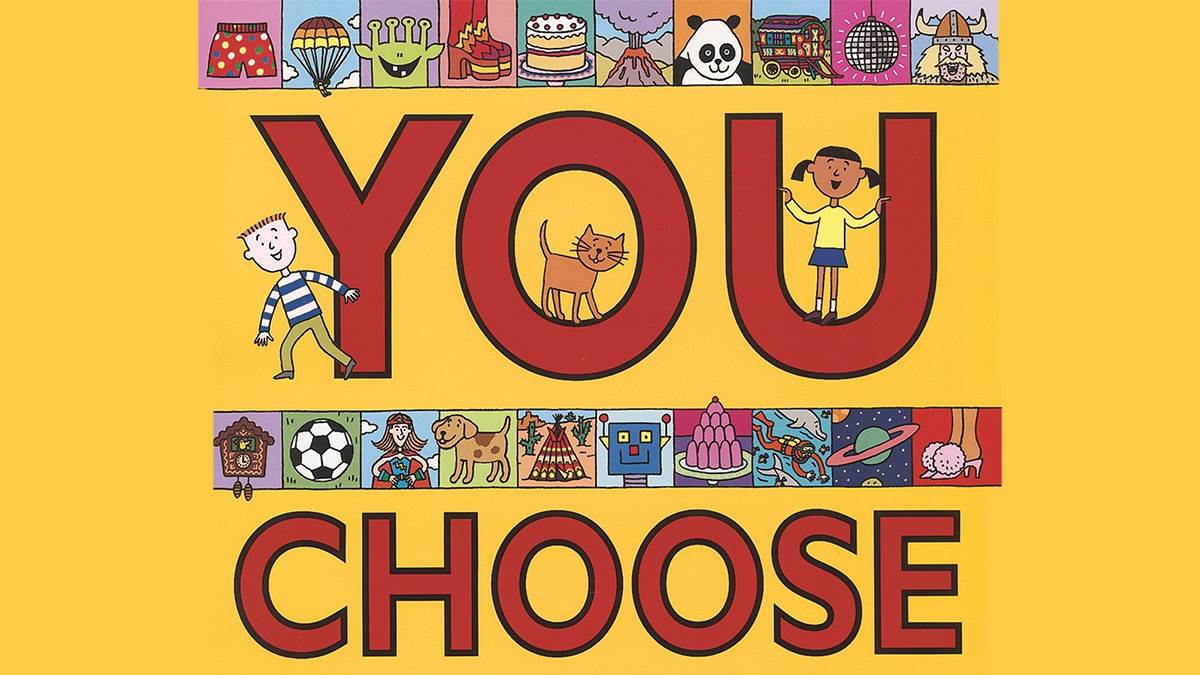
The picture book You Choose, written by Pippa Goodhart and illustrated by me, will be celebrating its twentieth birthday this year. It’s been a very successful book for us; a million seller, translated into several languages and even turned into a stage show. We’ve had some really wonderful feedback about it over the years and have been delighted to learn that the book has been used in all kinds of interesting ways and in many different situations. It does seem to be a book that people get very attached to.
We’ve been asked to sign the most incredibly battered and torn copies – a lovely indication of how much a book has been read.
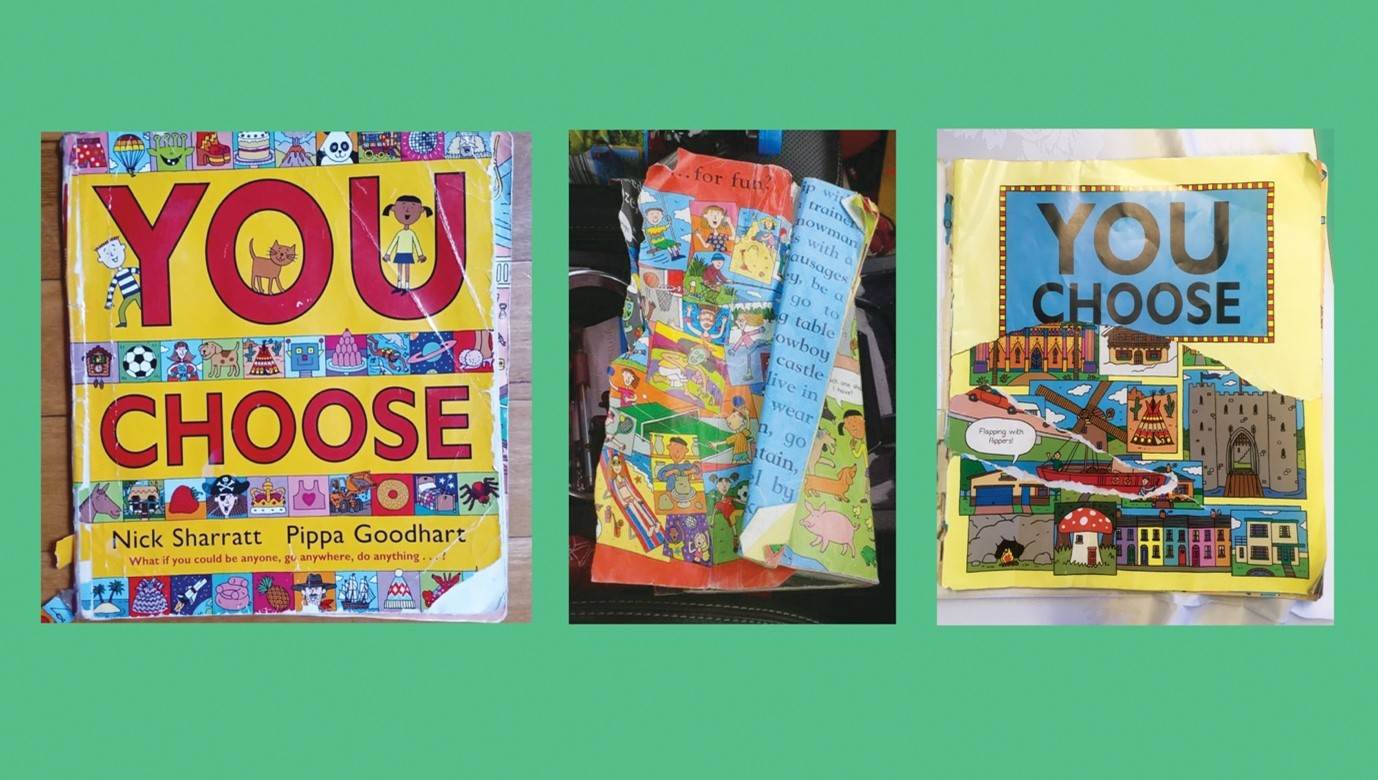 Battered and well-loved copies of You Choose
Battered and well-loved copies of You Choose
Pippa’s brilliant idea was to create a catalogue-style book that is incredibly easy and rewarding to engage with. Her own daughters had loved poring over catalogues when they were children, picking out the things that they liked best, and I remembered too what a pleasurable thing it was to go through the pages of my granny’s Green Shield Stamps catalogue, choosing my favourite items of clothing, furniture, toys and games, even selecting groceries from the Christmas hampers.
In You Choose we have pages of clothes, food and furniture but we also include spreads where you can decide which kind of home you’d like to live in, who you’d choose for a friend or relative, what your fantasy pet would be, what sort of job you’d like to do…
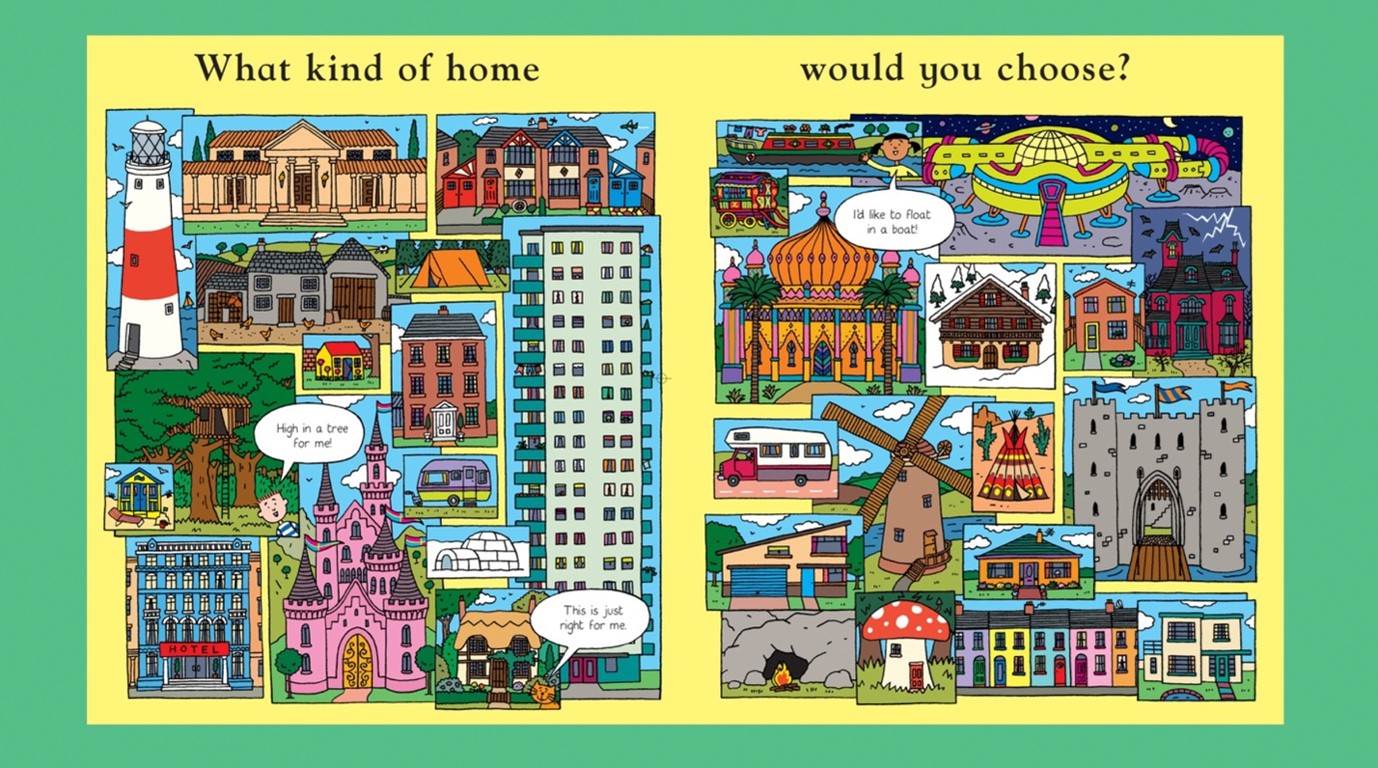 Illustration: Nick Sharratt
Illustration: Nick Sharratt
The wording throughout is kept to a minimum so it’s not intimidating for even the most reluctant reader.
Even though the spreads are filled with very detailed pictures containing lots of images, I tried to make everything really nice and clear and all the elements as easily decipherable as possible. The ‘choosing’ concept of the book is quickly grasped by pre-schoolers but it’s one that’s enjoyed across a very wide age range. The book’s proved successful with adults too, where English is a second language, for example.
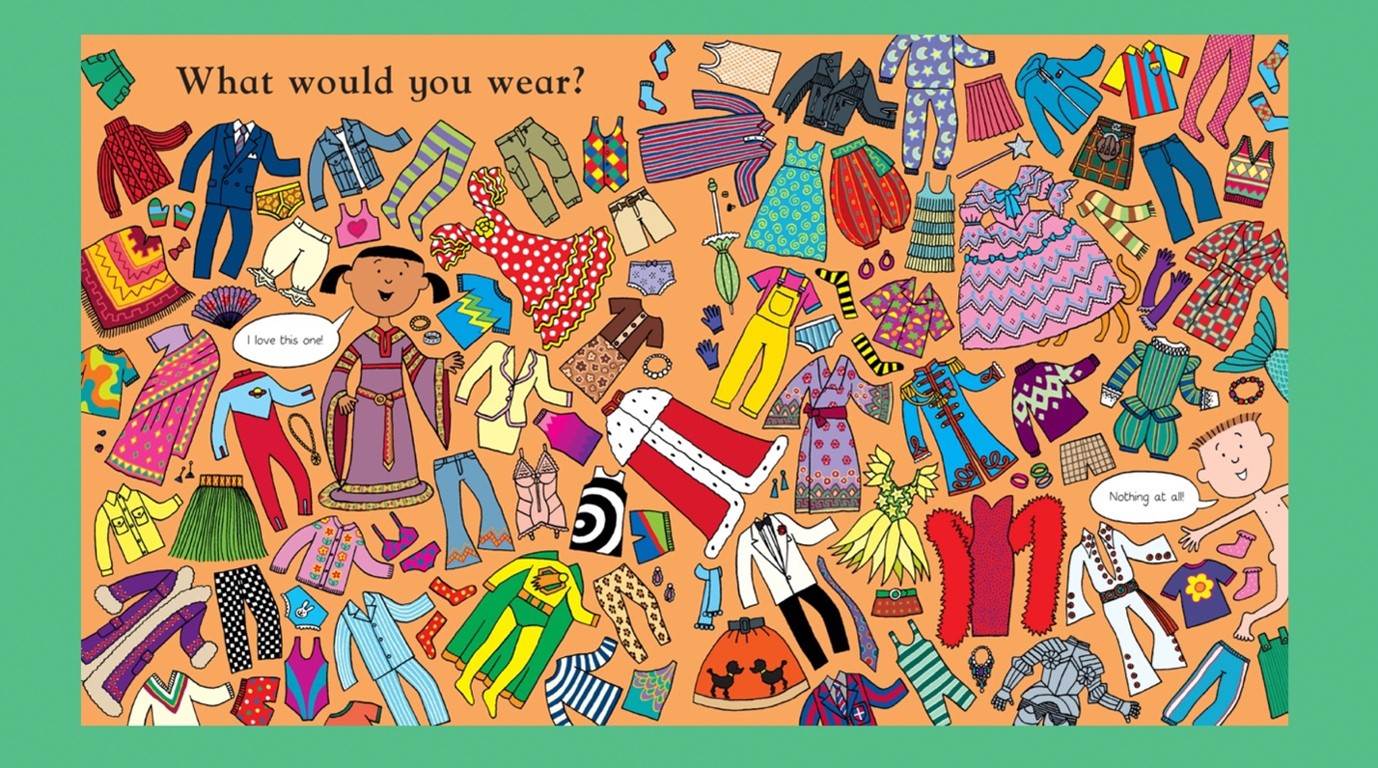 Illustration: Nick Sharratt
Illustration: Nick Sharratt
You Choose is great fun to peruse by yourself but it works particularly well as a book to be shared. That’s because it’s impossible to look at the book with another person and not have a conversation about the pictures. Perhaps because we tend to talk more freely when looking at something else rather than each other, we’ve often been told how helpful the book is for speech development, increasing vocabulary, enhancing communication skills and as a bonding tool.
Here are some ways it has been enjoyed, as related to us over the years. Lots of these ideas have come directly from children.
- Most straightforwardly, you can each choose one thing for yourself from each of the twelve spreads. Or you could choose two things, or three things, or five things. You might have a rule that you can’t both pick the same things (good for encouraging kindness and regard for others).
- You could choose things for each other, or for someone you both know, or for an imaginary character like a pirate or a princess.
- Alternatively, instead of making deliberate choices, you could play ‘lucky dip’, close your eyes and then see where your finger has landed on each spread.
- You could act out or mime each of your choices.
- You could make up a simple story from your twelve choices.
- You could play a game where you can only choose things beginning with a particular letter, the first letter of your name for example. Or maybe the chosen things must all have a predominant colour.
- You could play ‘I Spy’ or counting games with the book. ‘How many birds can you see on the “Pets” spread?’ ‘How many four-wheeled vehicles are there on the “Transport” spread?’ ‘How many vegetables can you spot in the “Food” spread?’
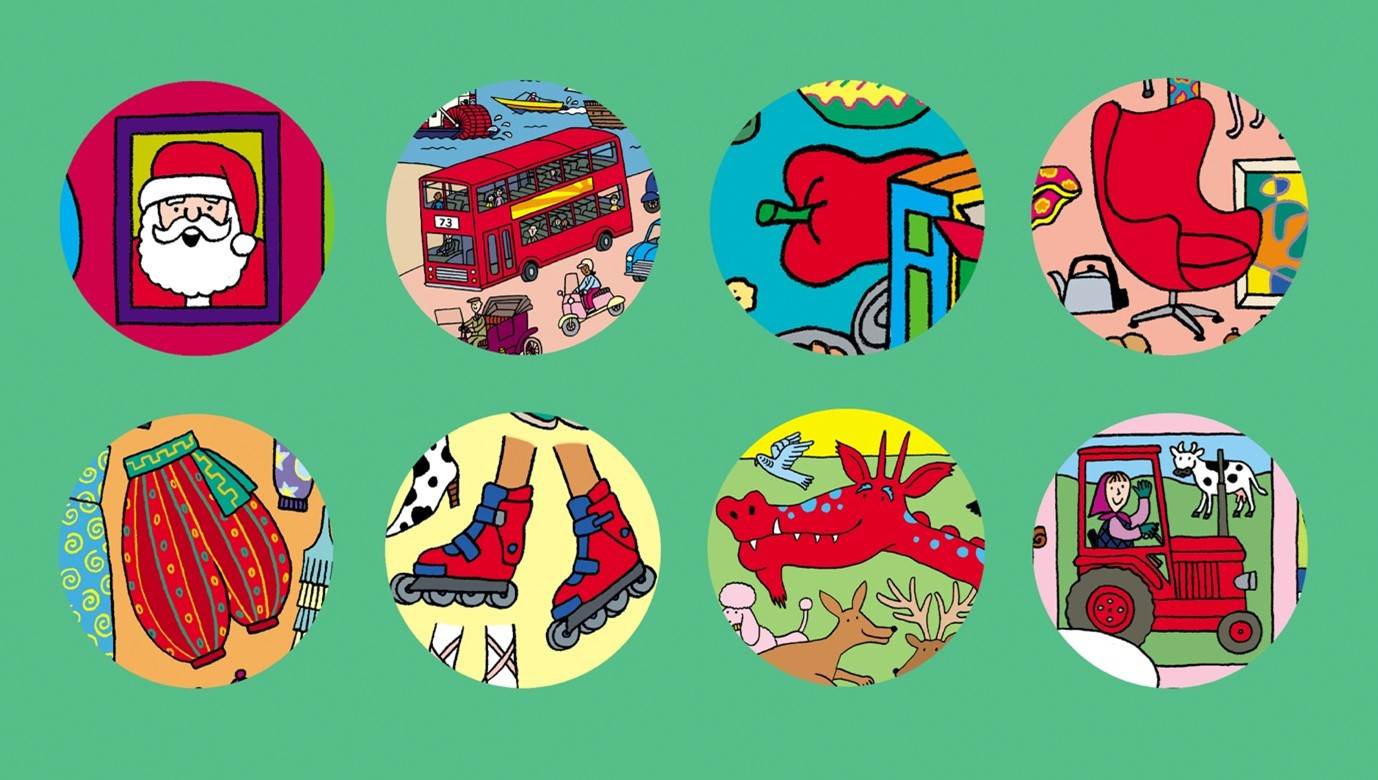 You could choose things that are one colour. Illustration: Nick Sharratt
You could choose things that are one colour. Illustration: Nick Sharratt
Of course, the pictures provide numerous possibilities for additional things to discuss, too. ‘How would it feel to have a wizard as a relative?’ ‘Would you rather live in a cave or a treehouse?’ ‘If you had a pet dragon, what name would you give it?’ ‘What kind of person would wear pointy shoes like those?’
We’ve also heard from quite a few teachers how the book has been utilised to help teach basic maths or linked in with geography (matching the various areas on the ‘Where would you go?’ spread to actual locations), history (finding out when the old-fashioned items on the ‘Shoes and Hats’ spread would have been worn) and art (everyone contributing an image to create a large ‘You Choose’-type wall display, for example).
There are three other You Choose books now. You Choose in Space follows the original format but places everything in an extra-terrestrial setting. You Choose Your Dreams stimulates imaginations by asking how it would feel to be gigantic or tiny or a wild animal or made of cheese. And the sequential nature of You Choose Fairy Tales increases the storytelling possibilities.
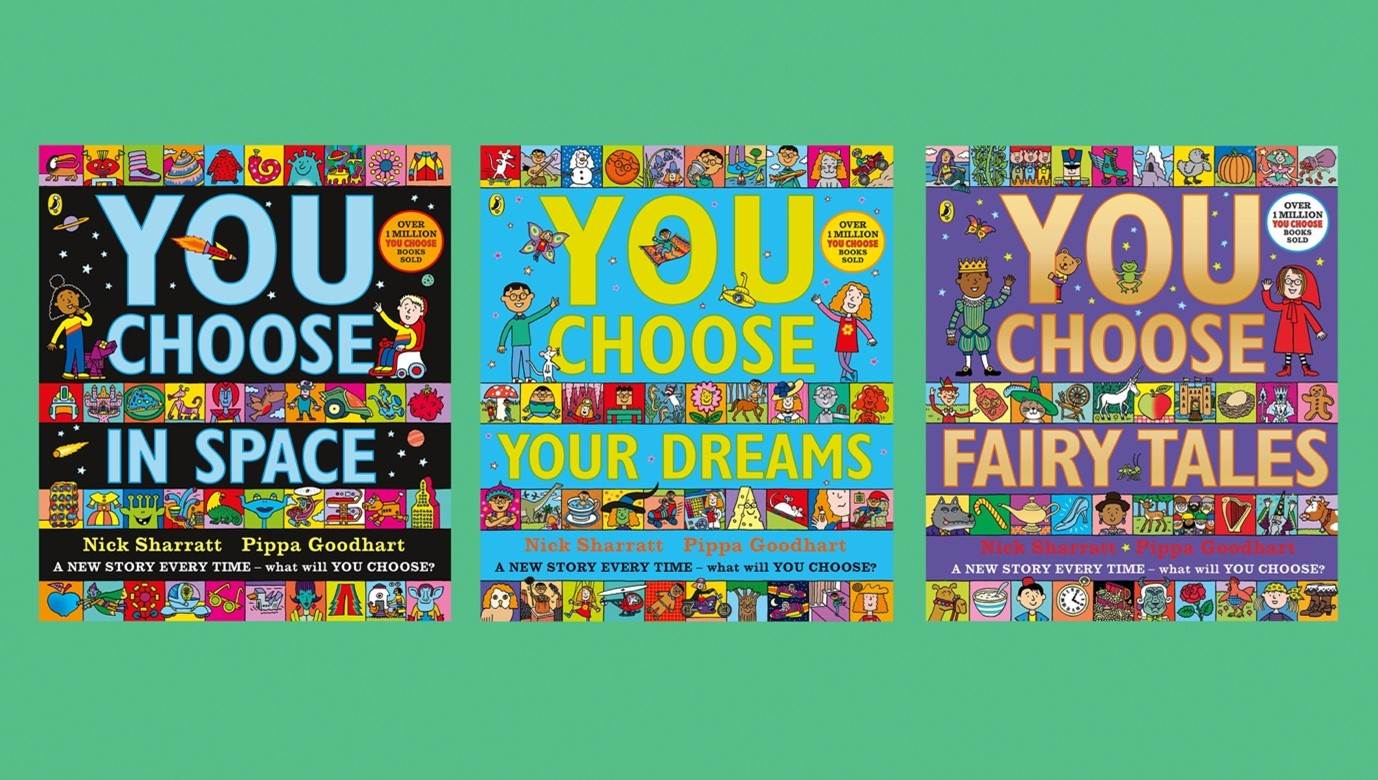
On this year’s World Book Day, 2 March, we’re delighted that one of the £1.00 books children can obtain with their token will be You Choose Your Adventure, which takes elements from all four books.
Pippa and I are also very excited that You Choose Christmas is going to be published in October.
Going back to the original You Choose, for Pippa and me, as its creators, the most extraordinary thing about the book has been when we’ve heard that it’s had an impact on a child’s real-life choices. Not long ago I was contacted by a mother who told me that when her four-year-old son saw the picture of ballet dancers on the ‘Jobs’ spread, he said to her, ‘I want to do that.’ So they found a local dance school for him to go to and, that little illustration having inspired him originally, he is currently training at a ballet school in the USA.
Once you’ve had fun with all the You Choose books, why not try some similarly fun books? Here are some suggestions for What to Read After You Choose.





